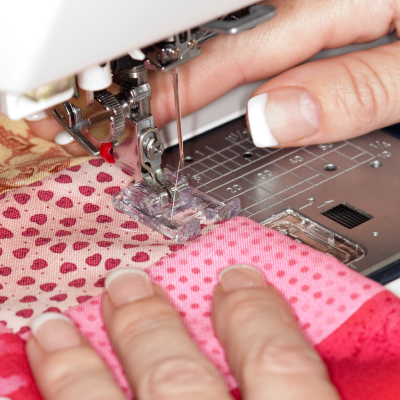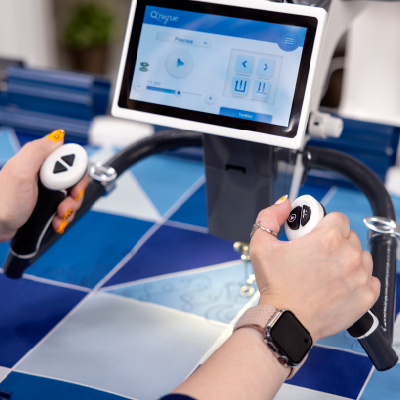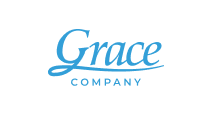7 Ways to Finish a Quilt
There’s more than one way to skin a cat, and there are even more ways to finish a quilt. When you’re just getting into quilting, it’s important to explore all the quilting methods out there to understand what kind of skills you want to build. We’ll break some of the most popular quilt-finishing methods into their pros and cons, so you can figure out exactly which method you want to explore further!
When to Finish Quilts by Hand
Quilting by hand is the most affordable way to finish your quilt, but it’s also the most time-consuming.
All you need to get started is a quilting needle, durable thread that can withstand a lot of tugging and pressure, a quilting hoop or frame to hold your fabric taut, a thimble to protect your fingers, and a fabric-safe marker to draw out your design.
Hand Quilting
Patience and practice are key to mastering this timeless technique.
Pros of Hand Quilting
- Timeless and Traditional: Hand quilting gives your quilt a classic, heirloom quality that’s hard to replicate.
- Portable: You can work on your quilt anywhere without needing bulky equipment.
- Personal Touch: Each stitch is a labor of love, and the imperfections make it uniquely yours.
Cons of Hand Quilting
- Time-Consuming: It’s a slow process and not ideal if you’re on a tight deadline.
- Physically Demanding: Hand quilting can be hard on your hands and wrists over long periods.
When to Use Hand Quilting
Hand quilting is perfect for smaller projects or when you want to create a family heirloom. It’s also ideal for quilts with simple piecing where the stitching can take center stage. Avoid this method for large quilts or when you’re short on time.
Hand Tying
Hand tying, or "tacking," is a simple and fast alternative to traditional hand quilting. Instead of stitching patterns, you secure the quilt layers together with knots of thread or yarn at regular intervals. To create a hand-tied quilt, you’ll need embroidery floss or strong yarn, a needle with a large eye, and scissors. Simply push the needle through all three layers, pull it back up, and tie a secure knot. Repeat this process across the quilt, spacing the knots evenly. This method is especially useful for thick batting or casual, cozy quilts.
Pros:
- Easy & Quick: Since you aren’t creating complicated designs, this is by far the simplest and fastest method for finishing your quilt.
- Charming & Rustic: The visible ties add a charming, rustic look to your quilt.
Cons:
- Less Secure: Provides less structural integrity than quilting stitches.
When to Use:
Perfect for utility quilts, baby quilts, or any project where speed and simplicity are priorities.
When to Quilt on a Domestic Sewing Machine
Quilting on a sewing machine costs more up front, as it requires the purchase of a sewing machine. Of course, this isn’t a factor if you used your sewing machine to piece your quilt top, or if you already have one for other purposes.
Using a sewing machine to finish your quilt offers more speed than hand quilting and a variety of creative options when it comes to method as well as the actual design of your quilting.
Push Quilting
This method involves straight-line or gentle curve quilting with the feed dogs engaged, essentially guiding your fabric through the machine in a controlled manner.
Pros:
- Great for Beginners: Aside from your sewing machine, push quilting doesn’t require a huge monetary investment.
- Easy to Learn: Because push quilting limits you to straight or gently curving lines, mastering the techniques required is simple.
- Minimal Setup: There’s no need to swap out your machine’s foot or fiddle with the feed dogs when you switch from piecing to quilting.
Cons:
- Simple Patterns: The same straight and curved lines that make this an easy skill to master also limit the quilted designs you can achieve.
- Bulky: Muscling your bulky quilt sandwich through a small sewing machine can be challenging and uncomfortable.
When to Use
Best for small-to-medium-sized quilts or when you’re just starting out.
Free Motion Quilting
Free motion quilting allows you to create intricate designs by lowering the feed dogs and moving the quilt sandwich freely under the needle.
Pros:
- Unlimited Design Potential: Without the feed dogs engaged, you can create loops, swirls, or custom patterns, moving the quilt through the machine however you like.
Cons:
- Steep Learning Curve: The same freedom of movement that makes free motion quilting so exciting also makes it difficult to master. Don’t worry, you’ll get the muscle memory down in time!
- Unregulated Stitching: Most sewing machines don’t have regulated stitching, so maintaining consistent stitch length will take some practice.
When to Use:
Use free motion quilting when you want to add a lot of personality or detail to your quilt. Avoid it if you’re new to sewing or feel overwhelmed by the idea of controlling the fabric manually.
When to Quilt on a Longarm Machine
You might have thought longarms were only for professional quilters, but that’s not true. Grace Company longarms are affordable, high-quality machines that bring longarming to quilting hobbyists everywhere!
That said, longarms still require a considerable up-front investment, making longarm quilting less accessible than hand quilting or domestic machine quilting.
For those willing to commit to a machine, longarm quilting machines can revolutionize the quilting process. These machines are designed specifically for quilting, offering advanced features and ample workspace.
Free Motion Quilting
Free motion quilting on a longarm is different than free motion quilting on a domestic machine. Rather than moving your quilt sandwich through your sewing machine, you move the longarm over the quilt sandwich as though it’s a pencil drawing on your quilted designs.
Pros:
- Unlimited Design Potential: If you can draw it, you can quilt it with a longarm.
- More Ergonomic: You don’t have to man-handle your entire quilt sandwich. Instead, you maneuver the longarm on the frame.
Cons:
- Steep Learning Curve: Just like any art form, free motion quilting takes time to master. That can be intimidating for beginning quilters.
When to Use:
Ideal for quilts where you want to add custom, intricate designs. Avoid if you’re not comfortable maneuvering a large machine yet.
Pantograph Quilting
Typically, pantographs are pre-designed patterns that you trace with a laser or stylus while guiding the machine. Grace Company also created the revolutionary Pattern Perfect, a series of plastic plates with tracks that guide your machine through a pattern. Pattern Perfect eliminates a lot of the cons of pantograph quilting, preventing mistakes and flattening the learning curve it takes to create seamless patterns!
Pros:
- Consistent Patterns: Get a consistent, accurate pattern repeating across the entire quilt from edge to edge.
- Pattern Potential: You can download free, printable pantographs, buy pantographs from quilt shops you love, or even create your own for almost-limitless pattern potential.
Cons:
- Requires Setup: You will need to figure out how to implement whatever kind of pantograph you use, whether you use a stylus, laser, or track and guide system.
- Takes Practice: Getting the hang of tracing the pattern with your machine takes some practice, but we’re sure you’ll nail it in the end!
When to Use:
Use pantographs for edge-to-edge quilting designs on bed-size quilts or when you want a cohesive look.
Automated Quilting
Adding quilting automation to your longarm system comes with another price tag, but what it loses in affordability, it makes up for efficiency. Automated quilting systems do the stitching for you based on a pre-programmed design.
Pros:
- Perfectly Even Stitches: Automated quilting takes human error out of the equation, for perfect stitches every time.
- Intricate Designs: Get the complicated, attractive designs of free motion quilting without hours of practice and imperfect designs.
- Save Time: If you enjoy piecing more than quilting, or if you just want to move on to your next project faster, automation saves you tons of time on each project.
Cons:
- High Upfront Cost: There’s no denying it: automated quilting systems are expensive.
- Less Hands-On Involvement: While you take human error out of your quilts, you also lose a little of the human touch. Still, you call the shots on the design. It comes down to how much or how little you want to be involved.
When to Use:
Automated quilting shines when you want professional-quality results for less effort.
Choosing the Quilting Method That’s Best for You
Finishing your quilt is an opportunity to make it truly yours. Each method has its strengths and ideal use cases:
- Hand Quilting: Perfect for smaller, heirloom projects where tradition and personal touch matter most.
- Quilting on a Domestic Machine: A great starting point for beginners or for simple, straightforward designs on small-to-medium-sized quilts. Offers creative freedom but requires practice and patience.
- Longarm Quilting: The go-to for large projects, professional finishes, and advanced quilting techniques.
No matter which method you choose, the most important thing is that you enjoy the process and take pride in your finished quilt. Happy quilting!
Posted by The Grace Company
For over 25 years the Grace Company has been the leading manufacturer of high quality quilting frames and quilting accessories. What truly sets The Grace Company apart from other competitors is its level of quality, value, and experience toward all their endeavours. From products to external and internal customer experience, the Grace Company responds to market and customer needs and continues to lead the quilting industry. Grace Company frames and hoops are designed to be easy to build and compatible with most major quilting machines. They'll have the quilting product you need.



